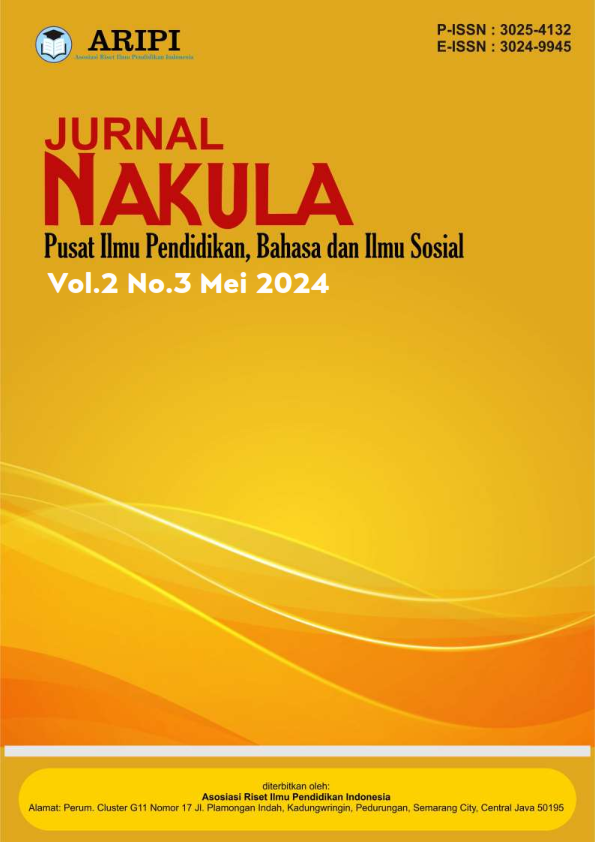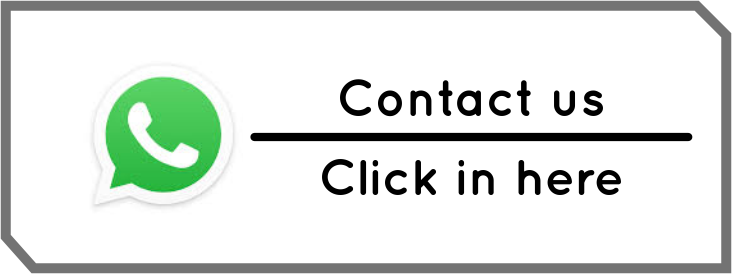Rancang Bangun Aksaranesia.Co Berbasis Waterfall Model Sebagai Media Gerakan Literasi Sekolah SMPN 4 Kota Yogyakarta
DOI:
https://doi.org/10.61132/nakula.v2i3.757Keywords:
Aksaranesia.co, School Literacy Movement, literacyAbstract
Literacy is important to master in the 21st century. However, in reality, students' low literacy skills are exacerbated by the use of conventional media and the implementation of the School Literacy Movement (GLS) which is not yet optimal. This research aims to (1) analyze the validity of Aksaranesia.co as GLS media at SMPN 4 Yogyakarta City; (2) analyzing the compatibility of Aksaranesia.co as GLS media at SMPN 4 Yogyakarta City; and (3) analyzing the usability of Aksaranesia.co as GLS media at SMPN 4 Yogyakarta City. This research is Research and Development (R&D), with a waterfall model consisting of 5 stages, namely requirements and definition, system and software design, implementation and unit testing, integration and system testing, and operation and maintenance. The results of this R&D are: (1) Aksaranesia.co obtained a mean score of 3.30 on content validity, and 3.66 on construct validity, so it is very valid; (2) Compatibility testing on Android 10.0-13.0, as well as Google Developer tools shows that Aksaranesia.co is 100% compatible; and (3) Aksaranesia.co through usability testing with a percentage of 96.68% or very feasible. Aksaranesia.co is expected to provide implications in efforts to develop literacy media to support the 2030 SDGs.
Downloads
References
Arts, J., Chinapaw, M. J., Gubbels, J. S., Verhoeff, A. P., Brons, A., Veldman, S., & Altenburg, T. M. (2024). Development and content validity of an application to assess 24-hour movement behaviors in 0–4-year-old children involving end-users and key stakeholders: the My Little Moves app. international journal of behavioral nutrition and physical activity, 21(1), 2.
Bandi, A., & Heeler, P. (2013, August). Usability testing: A software engineering perspective. In 2013 International Conference on Human Computer Interactions (ICHCI) (pp. 1-8). IEEE.
Buyens J. (2000). Web Database Development Step by Step. New York: Microsoft Press.
Dias, F., & Paiva, A. C. (2017, March). Pattern-based usability testing. In 2017 IEEE International Conference on Software Testing, Verification and Validation Workshops (ICSTW) (pp. 366-371). IEEE.
Faistah N., Bahri A., & Khaltsum U. (2023). Pengaruh minat baca terhadap kemampuan memahami bacaan peserta didik. 1–57.
Ghofur, A., & Rachma, E. A. (2019). Pemanfaatan Media Digital Terhadap Indeks Minat Baca Masyarakat Kabupaten Lamongan. Gulawentah:Jurnal Studi Sosial, 4(2), 89. https://doi.org/10.25273/gulawentah.v4i2.5524
Guttman, L. (1944). A Basis for Scaling Qualitative Data. American Sociological Review, 9, 139-150. http://dx.doi.org/10.2307/2086306.
Handayani, T. (2021). Pengembangan Media Komik Digital Berbasis STEM untuk Meningkatkan Literasi Sains Siswa Sekolah Dasar. Jurnal Didaktika Pendidikan Dasar, 5(3), 737–756. https://doi.org/10.26811/didaktika.v5i3.343
Inie, N., & Westh, B. H. (2022). Evaluating Academic Reading Support Tools: Developing the aRSX-Questionnaire. Communications in Computer and Information Science, 1624 CCIS(April), 316–335. https://doi.org/10.1007/978-3-031-14756-2_16
ISO. (2011). ISO: ISO/IEC 25010: 2011, Systems and software engineering -- Systems and software Quality Requirements and Evaluation (SQuaRE) -- System and software quality models. URL: https://www.iso.org/standard/35733.html
Juera, L. C. (2024). Digitalizing skills development using simulation-based mobile (SiM) learning application. Journal of Computers in Education, 11(1), 29-50.
Kemendikbud. (2016). Desain Induk Literasi Sekolah. 76.
Kern, R. (2000). Literacy and Language Teaching. ELT Journal, 57(1), 79–82. https://doi.org/10.1093/elt/57.1.79
Ki, T., Park, C. M., Dantu, K., Ko, S. Y., & Ziarek, L. (2019, May). Mimic: UI compatibility testing system for Android apps. In 2019 IEEE/ACM 41st International Conference on Software Engineering (ICSE) (pp. 246-256). IEEE.
Krouska, A., Troussas, C., & Sgouropoulou, C. (2022). Mobile game-based learning as a solution in COVID-19 era: Modeling the pedagogical affordance and student interactions. Education and information technologies, 27(1), 229-241.
Kustandi, C & Sutjipto B. (2013). Media Pembelajaran: manual dan digital. Bogor: Bogor Ghalia Indonesia.
Latuheru, D. (1998). Media pembelajaran dalam proses belajar-mengajar masa kini / John Lihat Juga Lokasi. 1–2.
Leacock, T. L., & Nesbit, J. C. (2007). A Framework for Evaluating the Quality of Multimedia Learning Resources- Special Issue on “Quality Research for Learning, Education, and Training.” Journal of Educational Technology & Society-, 10(2), 15. http://www.sfu.ca/~jcnesbit/articles/LeacockNesbit2007.pdf
Likert, R. (1932). A technique for the measurement of attitudes. Archives of Psychology, 140, 44–53.
Liu, P., Zhao, Y., Cai, H., Fazzini, M., Grundy, J., & Li, L. (2022, July). Automatically detecting api-induced compatibility issues in android apps: A comparative analysis (replicability study). In Proceedings of the 31st ACM SIGSOFT International Symposium on Software Testing and Analysis (pp. 617-628).
Marcelina, V., Setiawan, I., & Purwanto, A. (2023). Pengembangan E-Modul Fisika Untuk Melatihkan Literasi Sains. 3.
Marisda, D. H., & Basri, S. (2022). Analyzing the Validity of Interactive Multimedia-based Learning on Acid Rain Content. KnE Social Sciences, 296-307.
Martinez, V. G., & López-Río, J. (2015). About the Horrific Peril of Reading on Digital Devices. Procedia - Social and Behavioral Sciences, 178(November 2014), 105–109. https://doi.org/10.1016/j.sbspro.2015.03.159
Muttaqin, M. F., & Rizkiyah, H. (2022). Efektifitas Budaya Literasi dalam Meningkatkan Keterampilan 4C Siswa Sekolah Dasar. Dawuh Guru: Jurnal Pendidikan MI/SD, 2(1), 43–54. https://doi.org/10.35878/guru.v2i1.342
Nielsen, J. (2012). Nielsen Norman Group Usability 101: Introduction to usability. Nielsen Norman Group, 1–5.
Nieveen, N. (1999). Prototyping to Reach Product Quality. Design Approaches and Tools in Education and Training, 125–135. https://doi.org/10.1007/978-94-011-4255-7_10
Niranjanamurthy, M., Nagaraj, A., Gattu, H., & Shetty, P. K. (2014). Research study on importance of usability testing/User Experience (UX) testing. International Journal of Computer Science and Mobile Computing, 3(10), 78-85.
OECD. (2023). PISA 2022 Results: Factsheets - Indonesia. URL: https://www.oecd.org/publication/pisa-2022-results/country-notes/indonesiac2e1ae0e/.
Android Overview. (2012). Open Handset Alliance. URL: http://www.openhandsetalliance.com/android_overview.html. Diakses pada 04-11-2023.
Pobereżnik, Ł. (2013, September). A method for selecting environments for software compatibility testing. In 2013 Federated Conference on Computer Science and Information Systems (pp. 1355-1360). IEEE.
Prabowo, I. A., Wijayanto, H., Yudanto, B. W., & Nugroho, S. (2021). E-Book Ajar Pemrograman Mobile Berbasis Android. In Angewandte Chemie International Edition. https://eprints.sinus.ac.id/762/1/Buku_Ajar-Pemrograman_Android.pdf
Prayoga, I. G. P. A. (2023). Pengaruh Teknik Clustering Dalam Meningkatkan Keterampilan Menulis Mahasiswa ITB STIKOM Bali. 346–353.
Purnama, R. (2010). Mari Mengenal J2ME Java 2 Micro Edition. Prestasi Pustaka Jakarta, 2010–2011.
Putra, S. Z., Sholihatin, E., Faradillah, S., Salma, N., Monica, N. I., Ariansyah, R., & Farahdita, A. N. (2022). Jurnal Pendidikan : Rancang Bangun Aplikasi “ For - U ” Dalam Meningkatkan Literasi Digital Generasi Milenial Sistem Informasi , UPN “ Veteran ” Jawa Timur Visit us Jurnal Pendidikan : Seroja Anfa Mediatama Jurnal Pendidikan.
Ramdani, A., Jufri, A. W., & Jamaluddin, J. (2020). Pengembangan Media Pembelajaran Berbasis Android pada Masa Pandemi Covid-19 untuk Meningkatkan Literasi Sains Peserta Didik. Jurnal Kependidikan: Jurnal Hasil Penelitian Dan Kajian Kepustakaan Di Bidang Pendidikan, Pengajaran Dan Pembelajaran, 6(3), 433. https://doi.org/10.33394/jk.v6i3.2924
Royce, W. W. (1970) “Managing The Development of Large Software Systems”, Proceedings of IEEE WESCON, pp. 1-9.
Saryono, D., Ibrahim, G. A., Muliastuti, L., Akbari, Q. S., Hanifah, N., Miftahussuri, Nento, M. N., & Efgeni. (2017). Materi Pendukung Literasi Baca Tulis: Gerakan Literasi Nasional. Kemdikbud, 1–39.
Sommerville, I. (2011). Software Engineering (9th ed.). Massachusetts: Pearson.
Sudaryono, Guritno, S., Rahardja, U. (2011). Theory and Application of IT Research: Metodologi Penelitian Teknologi Informasi. Jakarta: Andi.
Sugiyono, D. (2013). Metode Penelitian Kuantitatif, Kualitatif, dan Tindakan.
Sukma, E., Indrawati, T., & Suriani, A. (2020). Penggunaan Media Literasi Kelas Awal di Sekolah Dasar. Jurnal Inovasi Pendidikan Dan Pembelajaran Sekolah Dasar, 3(2), 103. https://doi.org/10.24036/jippsd.v3i2.107623
Terhorst, Y., Philippi, P., Sander, L. B., Schultchen, D., Paganini, S., Bardus, M. & Messner, E. M. (2020). Validation of the mobile application rating scale (MARS). Plos one, 15(11), e0241480.
Ulfa, D. N. F., & Walid, M. (2023). Inovasi Desain Pembelajaran Literasi Digital Untuk Anak Paud Berbasis Android Dengan Kodular. Jurnal Minfo Polgan, 12(1), 567-574.
UNESCO. (2003). The Prague declaration. Nutricion Hospitalaria, 24(5), 622–623. http://www.ncbi.nlm.nih.gov/pubmed/19893875
United Nations. (2015). Education and Promote Lifelong Learning. 27. https://sdgs.un.org/goals/goal4
Warsihna, J. (2016). Meningkatkan Literasi Membaca Dan Menulis Dengan Teknologi Informasi Dan Komunikasi (Tik). Jurnal Kwangsan, 4(2), 67. https://doi.org/10.31800/jtp.kw.v4n2.p67--80
WEF. (2015). New Vision for Education : Fostering Social and Emotional Learning through Technology. World Economic Forum, March, 36. http://www3.weforum.org/docs/WEF_New_Vision_for_Education.pdf
Zhang, T., Gao, J., Cheng, J., & Uehara, T. (2015, March). Compatibility testing service for mobile applications. In 2015 IEEE Symposium on Service-Oriented System Engineering (pp. 179-186). IEEE.
Downloads
Published
How to Cite
Issue
Section
License
Copyright (c) 2024 Jurnal Nakula : Pusat Ilmu Pendidikan, Bahasa dan Ilmu Sosial

This work is licensed under a Creative Commons Attribution-ShareAlike 4.0 International License.





